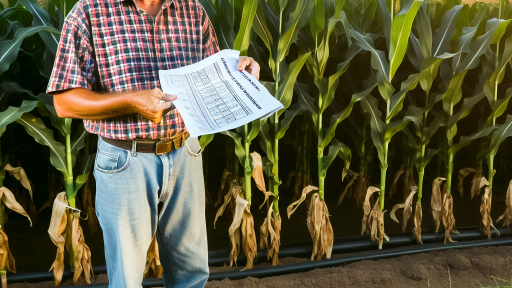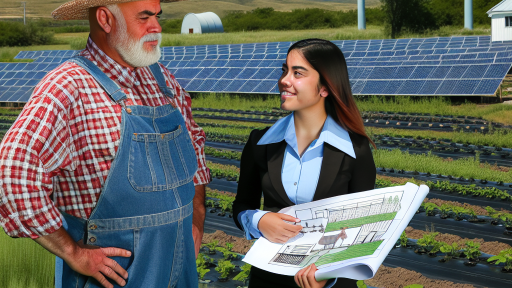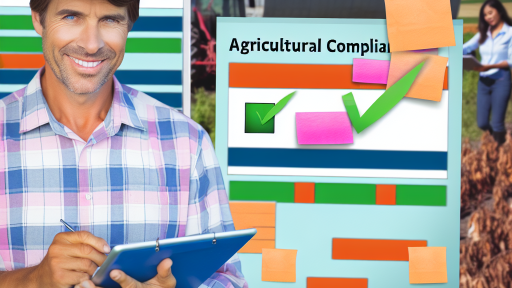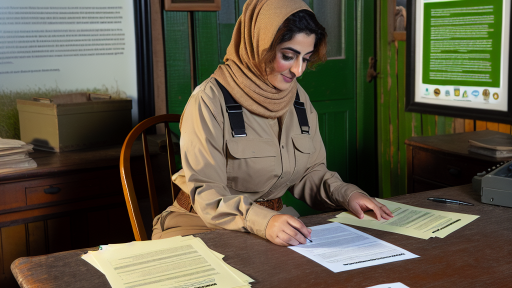Understanding the Importance of Conservation Programs
Enhancing Biodiversity
Conservation programs play a vital role in enhancing biodiversity.
By protecting various species, these programs help maintain balanced ecosystems.
Additionally, they support the revival of habitats that have been depleted or damaged.
Combatting Climate Change
These programs play an essential part in combatting climate change.
They promote the conservation of forests, wetlands, and other natural resources.
Consequently, this helps in reducing greenhouse gas emissions.
Engaging Local Communities
Successful conservation programs actively engage local communities.
They encourage participation in sustainable practices that support conservation goals.
Moreover, these programs create awareness about environmental issues.
Providing Economic Benefits
Conservation programs offer significant economic benefits as well.
They create job opportunities in eco-tourism and sustainable agriculture.
This, in turn, boosts local economies while preserving natural resources.
Promoting Education and Research
Educational initiatives are a crucial component of conservation programs.
They promote environmental awareness among all age groups.
Furthermore, research conducted under these programs leads to innovations in conservation techniques.
Transform Your Agribusiness
Unlock your farm's potential with expert advice tailored to your needs. Get actionable steps that drive real results.
Get StartedIdentifying Key Stakeholders and Engaging Stakeholder Participation
Understanding Key Stakeholders
Identifying key stakeholders is essential for conservation program success.
Stakeholders may include local communities, governments, NGOs, and businesses.
Each group has unique interests and potential contributions.
Recognize who holds influence over the program’s outcomes.
Understanding stakeholder motivations can enhance collaboration.
Mapping Stakeholders
A stakeholder map helps visualize relationships and power dynamics.
Begin by listing all potential stakeholders related to the program.
Then, categorize them based on their influence and interest.
This process clarifies who to prioritize in engagement efforts.
Regularly update the map as circumstances change.
Engaging Stakeholders
Engagement fosters trust and commitment among stakeholders.
Utilize surveys or workshops to gather input and feedback.
Encourage open dialogue to address concerns and explore ideas.
Be transparent about goals and processes during discussions.
Creating Inclusive Participation Opportunities
Inclusion ensures diverse perspectives are considered.
Offer various channels for participation, such as forums and online platforms.
Ensure accessibility for underrepresented groups.
Empower stakeholders by providing leadership roles in the process.
Building Long-term Relationships
Sustaining relationships is vital for ongoing engagement.
Maintain regular communication with stakeholders beyond initial meetings.
Provide updates on program progress and outcomes.
Celebrate achievements together to strengthen community ties.
Long-term partnerships can lead to collaborative success and shared ownership.
Setting Clear and Measurable Goals for Conservation Efforts
Importance of Measurable Goals
Measurable goals provide a clear direction for conservation programs.
Showcase Your Farming Business
Publish your professional farming services profile on our blog for a one-time fee of $200 and reach a dedicated audience of farmers and agribusiness owners.
Publish Your ProfileThey allow organizations to track progress and make necessary adjustments.
Furthermore, measurable goals enhance accountability among team members.
With clear indicators, stakeholders can assess the effectiveness of initiatives.
Establishing Clear Objectives
Start by defining what success looks like for your conservation project.
Consider both short-term and long-term objectives for comprehensive planning.
Additionally, involve staff and community stakeholders in goal-setting discussions.
This collaboration fosters ownership and commitment to conservation efforts.
Using SMART Criteria
Apply the SMART criteria when formulating goals.
Ensure goals are Specific, Measurable, Achievable, Relevant, and Time-bound.
For example, set a goal to plant 1,000 trees within the next year.
This specificity enables teams to focus their efforts effectively.
Monitoring Progress and Outcomes
Develop a system for regular monitoring of progress.
Track specific metrics related to your goals.
For instance, record the number of species restored or habitats preserved.
Regular assessments empower teams to recognize successes and challenges.
Adapting Goals as Necessary
Be prepared to adjust your goals as new data emerges.
Flexibility ensures that conservation efforts remain relevant and impactful.
Engage with experts regularly to refine strategies and objectives.
This responsiveness strengthens the overall effectiveness of programs.
Communicating Goals to Stakeholders
Clearly communicate established goals to all stakeholders.
Transparency builds trust and enhances collaboration across stakeholders.
Use newsletters, social media, or community meetings to share updates.
Regular communication keeps everyone informed and motivated.
See Related Content: Enhancing Food Quality Through Farm-To-Table Regulations in Farming
Developing Comprehensive Education and Outreach Strategies
Identifying Target Audiences
Understanding your target audience is crucial for effective outreach.
Start by researching demographics and local interests.
Identify groups that will benefit from conservation education.
Furthermore, tailor your message to resonate with these audiences.
Creating Engaging Content
Develop content that captures attention and inspires action.
Utilize a mix of formats such as videos, blogs, and social media posts.
Include stories that illustrate the importance of conservation efforts.
Visual elements like infographics can enhance understanding.
Building Partnerships
Collaborate with local organizations to expand your reach.
Engage schools, community groups, and environmental advocates.
Partnerships can provide additional resources for outreach efforts.
Such collaborations enhance credibility and visibility for programs.
Utilizing Technology
Incorporate digital tools to streamline outreach initiatives.
Social media platforms offer opportunities for widespread engagement.
Webinars and online courses can reach a broader audience.
Moreover, email newsletters keep stakeholders informed and engaged.
Showcase Your Farming Business
Publish your professional farming services profile on our blog for a one-time fee of $200 and reach a dedicated audience of farmers and agribusiness owners.
Publish Your ProfileMonitoring and Evaluating Outreach Efforts
Regularly assess the effectiveness of your outreach strategies.
Utilize surveys to gather feedback from participants.
Analyze engagement metrics to measure impact over time.
Adapt strategies based on evaluation findings for continuous improvement.
Learn More: Developing a Food Safety Plan for Your Farm
Integrating Scientific Research into Program Design and Implementation
Importance of Scientific Research
Scientific research provides a foundation for effective conservation programs.
It helps identify the most pressing environmental issues.
Additionally, research informs the selection of appropriate methods and strategies.
Collaboration with Experts
Collaborating with scientists enhances program credibility and effectiveness.
Engaging experts fosters the integration of the latest findings.
This partnership also aids in developing robust monitoring methodologies.
Utilizing Data-Driven Approaches
Data-driven approaches enable more accurate assessments of conservation needs.
They help track the progress of conservation initiatives.
Moreover, analyzing data allows for timely interventions when needed.
Adapting to New Knowledge
Programs must remain flexible to adapt to new scientific discoveries.
Regular reviews of program strategies ensure alignment with current research.
This adaptability is crucial for addressing evolving environmental challenges.
Implementing Best Practices
Implementing best practices derived from research ensures program success.
These practices can include habitat restoration, species monitoring, and community engagement.
Regular training based on the latest research enhances staff competencies.
Engaging Community Stakeholders
Involving community stakeholders fosters a sense of ownership in conservation efforts.
It encourages shared responsibility towards environmental stewardship.
Additionally, community input can guide research priorities and strategies.
Evaluating Program Impact
Regular evaluations help measure the impact of conservation programs.
This assessment can identify successful strategies and areas needing improvement.
Over time, adapting approaches based on evaluation results leads to enhanced outcomes.
Find Out More: The Benefits of Food Safety Standards for Farm-to-Table Supply Chains
Leveraging Technology for Data Collection and Program Monitoring
Importance of Technology in Conservation
Technology plays a vital role in conservation efforts today.
It enhances data collection and monitoring efficiency.
Moreover, it ensures accurate tracking of program outcomes.
Innovative tools offer insights into ecosystem health.
Additionally, they facilitate better decision-making.
Types of Technologies for Data Collection
Remote sensing technology allows for comprehensive land assessments.
Drones provide aerial imagery that enhances data gathering.
GPS devices help track wildlife movements with precision.
Mobile applications enable volunteers to report observations effectively.
Furthermore, data loggers collect vital environmental information easily.
Using Software for Program Monitoring
Specialized software streamlines data management processes.
Such software can generate real-time reports on project status.
Visualization tools help stakeholders understand complex data sets.
Showcase Your Farming Business
Publish your professional farming services profile on our blog for a one-time fee of $200 and reach a dedicated audience of farmers and agribusiness owners.
Publish Your ProfileAdditionally, data analysis programs identify trends over time.
This insight supports adaptive management strategies.
Integrating Community Participation with Technology
Engaging local communities enhances data collection efforts.
Training volunteers on technological tools ensures effective use.
Furthermore, citizen science initiatives encourage broader involvement.
For instance, photo-sharing platforms allow for biodiversity tracking.
Collaboration with local tech firms can increase project outreach.
Ensuring Data Security and Privacy
Data security is paramount in conservation programs.
Implementing encryption protects sensitive information.
Regular audits ensure compliance with privacy policies.
Training staff on data handling best practices is essential.
Ultimately, secure data fosters trust among stakeholders.
Gain More Insights: Implementing Effective Food Safety Practices on Your Farm
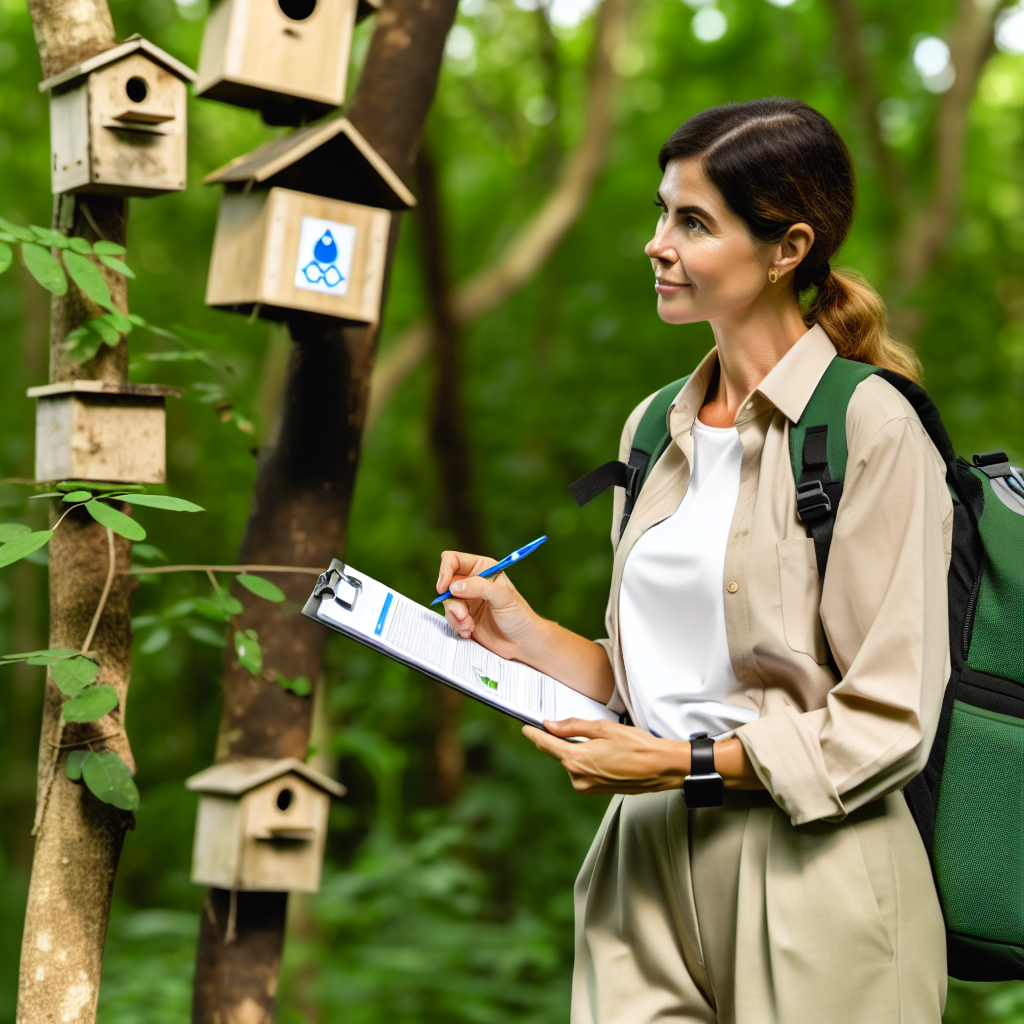
Establishing Partnerships with Non-Profits, Government, and Community Groups
Identifying Potential Partners
Start by researching local non-profits focused on conservation.
Consider engaging with government agencies that support environmental initiatives.
Identify community groups interested in conservation efforts.
Utilize social media and networking events to expand your reach.
Building Strong Relationships
Establish clear communication from the outset.
Listen actively to the needs and goals of potential partners.
Create a shared vision that aligns organizational objectives.
Schedule regular meetings to foster ongoing dialogue.
Offer support to partners without expecting immediate returns.
Collaborative Projects and Programs
Develop joint projects that benefit all partners involved.
Consider organizing community events to raise awareness.
Leverage the expertise of each partner to enhance project quality.
Seek diverse perspectives to design more effective initiatives.
Evaluating Partnership Effectiveness
Set measurable goals to assess partnership success.
Track progress and share results with all stakeholders.
Solicit feedback from partners to improve future collaborations.
Celebrate achievements to strengthen relationships further.
Funding and Resource Sharing
Explore grant opportunities from government and non-profit sources.
Collaborate on fundraising efforts to support shared initiatives.
Share resources such as facilities, volunteers, and expertise.
Utilize technology to streamline communication and logistics.
Evaluating Program Success through Metrics and Feedback Mechanisms
Importance of Metrics
Metrics play a crucial role in evaluating conservation programs.
They provide tangible data to assess program effectiveness.
Furthermore, metrics help identify areas needing improvement.
Data-driven decisions enhance resource allocation.
Ultimately, metrics support accountability and transparency.
Types of Metrics to Consider
Several metrics can be useful in conservation evaluations.
Showcase Your Farming Business
Publish your professional farming services profile on our blog for a one-time fee of $200 and reach a dedicated audience of farmers and agribusiness owners.
Publish Your Profile- Performance metrics measure project outcomes and achievements.
- Financial metrics assess the cost-effectiveness of implementations.
- Ecological metrics evaluate environmental impact.
- Social metrics gauge community involvement and satisfaction.
Implementing Feedback Mechanisms
Feedback mechanisms are vital for continuous improvement.
They allow stakeholders to share their experiences and suggestions.
Regularly gathering feedback strengthens relationships with participants.
This process fosters a sense of ownership in community initiatives.
Methods for Collecting Feedback
Various methods exist for effective feedback collection.
- Surveys can provide structured insights from participants.
- Focus groups encourage in-depth discussions about specific topics.
- Interviews allow for personalized perspectives on program impact.
- Online platforms facilitate broader community input.
Analyzing Collected Data
Once data is collected, analyzing it is essential.
Data analysis helps uncover trends and patterns in feedback.
Additionally, it highlights successes and areas for enhancement.
Regular reviews provide insight into how the program evolves over time.
Communicating Results and Adjustments
Effective communication of findings is paramount.
Sharing results builds trust among stakeholders.
Moreover, it ensures participants are informed of changes.
Clearly communicating adjustments can enhance the program’s effectiveness.
Adapting and Innovating Based on Lessons Learned from Previous Programs
Evaluating Past Program Successes
To achieve conservation program success, first evaluate past efforts.
Identify specific outcomes and metrics used.
Gather feedback from stakeholders involved.
This assessment reveals strengths and weaknesses.
Analyze data to understand what worked well.
Use this information to shape future initiatives.
Learning from Failures
Every conservation program has lessons to teach.
Examine failures closely for insights.
Understand the contributing factors to these outcomes.
Were there issues with planning or execution?
Gather input from team members and participants.
Utilize these lessons to avoid repeating mistakes.
Fostering Adaptive Management
Adaptive management is crucial for ongoing success.
This approach allows for flexibility in program design.
Regularly review progress and adjust strategies as needed.
Incorporate new data and stakeholder feedback continuously.
This fosters a culture of learning and improvement.
Incorporating Innovative Practices
Innovation drives effective conservation programs.
Explore cutting-edge technologies and methodologies.
Consider partnerships with research institutions.
Stay updated on advancements in the field.
Integrating innovative practices can enhance outcomes.
Engaging Stakeholders Throughout the Process
Engage stakeholders to gain diverse perspectives.
This includes local communities, experts, and funders.
Facilitate open communication at every stage.
Incorporate their insights into program development.
Active participation builds trust and support.
Showcase Your Farming Business
Publish your professional farming services profile on our blog for a one-time fee of $200 and reach a dedicated audience of farmers and agribusiness owners.
Publish Your ProfileDocumenting and Sharing Knowledge
Effective documentation ensures knowledge transfer.
Maintain detailed records of program processes and outcomes.
Share findings and practices with the wider community.
Publishing reports helps others learn from your experiences.
This contributes to a collective understanding of conservation efforts.
Additional Resources
Water Conservation Best Management Practices
Protecting Californians From Extreme Heat: A State Action Plan to …

